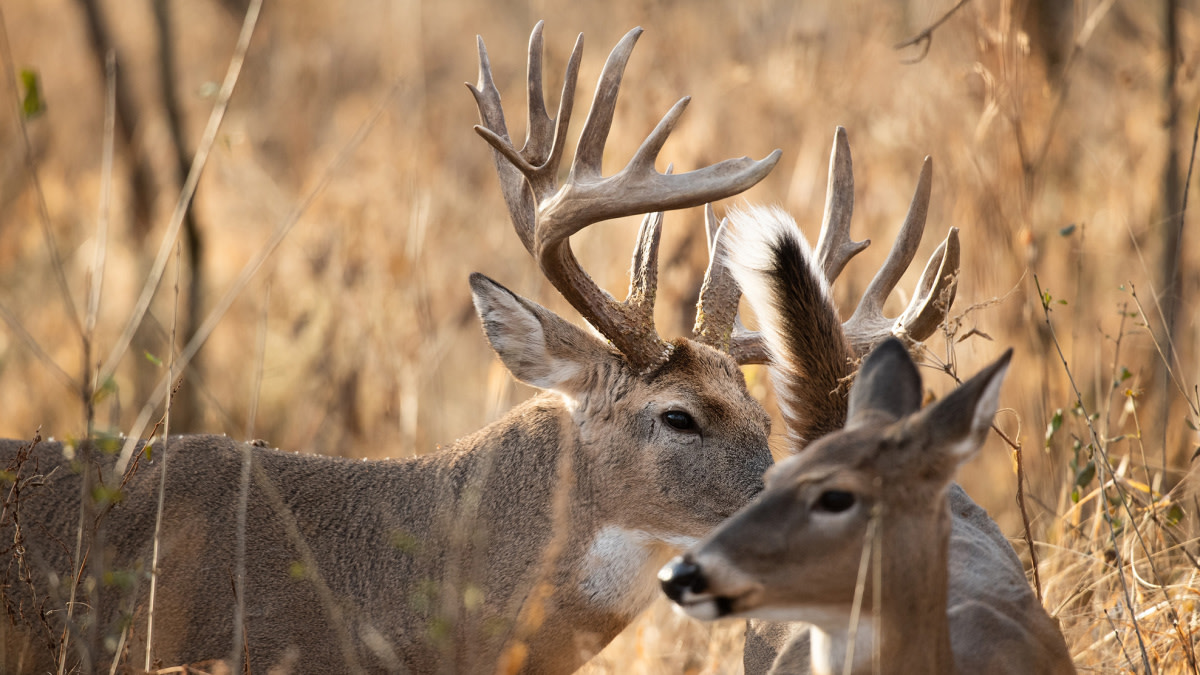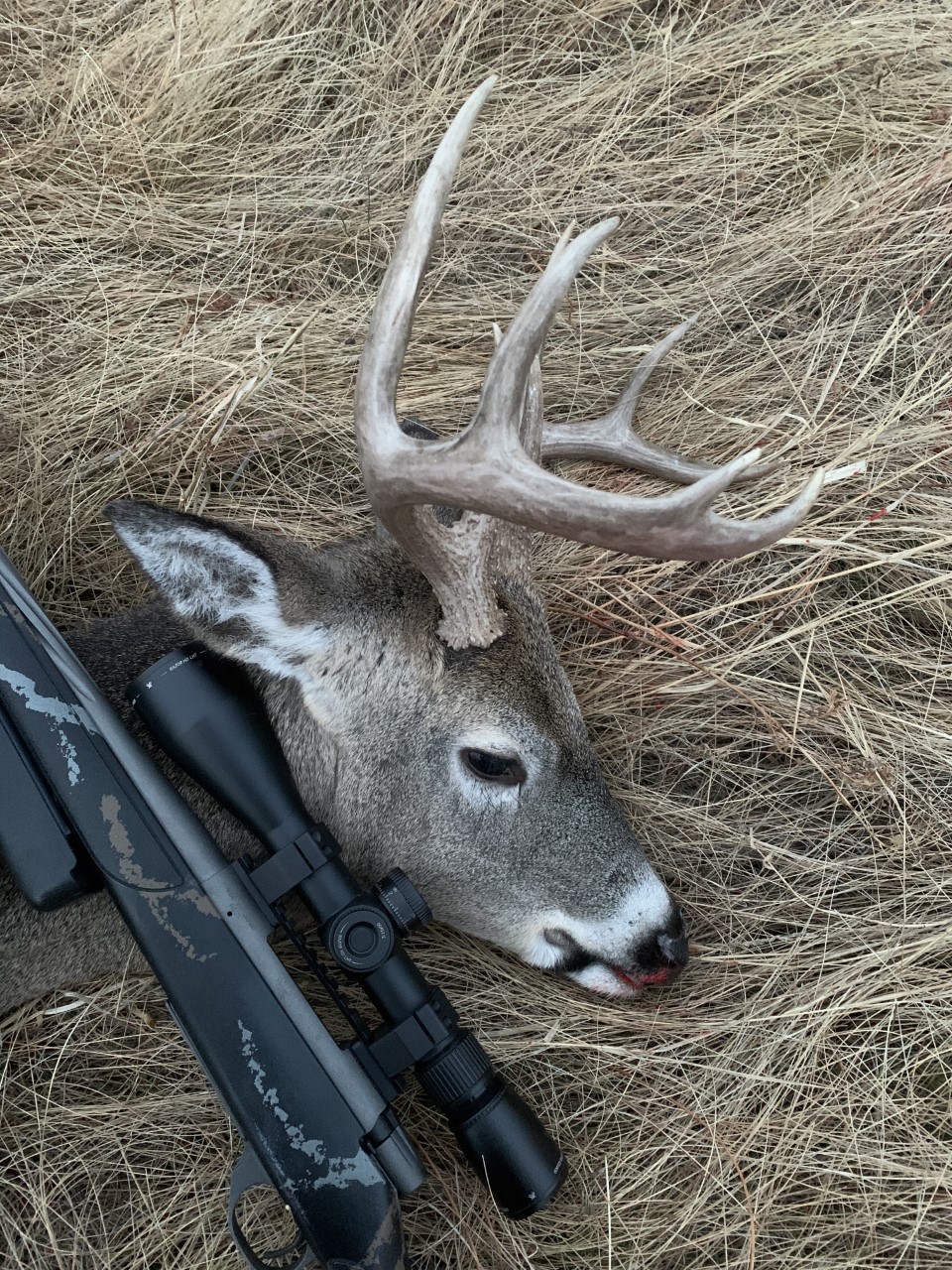
Every week this fall, I’ll be providing updates on whitetail buck movement for the entire country. These reports are based on intel from whitetailers in each region and my own observations as a traveling deer hunter. For more info like this, subscribe to the Rut Fresh Radio Podcast and Whitetail Weekly Newsletter. No one covers the rut like us.
The rut is a bell curve that climaxes in mid-November. Every day you get closer to that date, daylight buck movement increases. Every day you get further away, daylight buck movement decreases. This is an important concept to grasp as we approach what most hunters call the “lockdown phase” of the rut.
Lockdown is when a buck finds a willing doe in estrus. Many hunters imagine a two- to three-day window where buck movement shuts down and that bell curve takes a steep drop from its peak. GPS collar deer studies show that this isn’t the case, though.
“I think some hunters put a human spin on their explanations for deer behaviors, and in their story a buck finds a doe and goes into the honeymoon suite for a few days,” said Andy Olson, a researcher at the University of Georgia, in an interview with QDMA. “During peak rut, these deer were just crazy. They were all over the place.”
The reality is that movement by a specific buck might halt for a few hours this time of year, but it’s not on a scale that should be noticeable by hunters. So, get out there and hunt. This is still the rut, and anything can happen.
Here’s how each region breaks down for the coming week.
East
My contacts in the East said buck movement has been awesome over the last five days. It’s been a circus of chasing, fighting, and breeding, and it’s likely to continue into the weekend. They also said scrapes have gone cold but rubbing activity has increased. This is on par with what you’d expect this time of year.
The approaching mild weather won’t stop bucks from moving, even at midday. If you’re looking to kill a lunchtime cruiser, read our article on the three best spots to deer hunt at midday during the rut. Nearly every property, public or private, will have one of these three places where you can place your stand. Midday movement only happens for mature bucks about 10 days a year, so don’t miss this opportunity.
South
The “northern” part of the South is currently in the seeking and chasing phase of the rut, meaning that peak rut is still about a week or so away. With no favorable cold front on the way, hunters can expect mature buck movement to be limited to the first and last hour of daylight. And unlike the rest of the country, scrapes will still be relevant.
The “southern” part of the South is mostly in some form of pre-rut. Scrapes are equally relevant there, as well as food sources like acorns and ag. It’s best to make calculated strikes close to buck beds right now, waiting for cold weather to get bucks on their feet or precipitation to wash away scent. Bucks are still nearly a month out from losing their minds in portions of the South where the rut doesn’t peak until December and January.

Midwest
The rut isn’t a light switch that you turn on and off—but damnit these last few days have made it feel like that. Deer movement has been at an all-time high since the weekend and bucks have been as killable as they’ll be all season. The reason? Well, historically November 7 to 10 are the best days of the rut, and when you combine that with the massive cold front that moved through, it made for stellar rut action.
This great movement will continue for the next week or so. It might not be as good as it’s been these last couple of days, but bucks are still going to be cruising and looking for does. Expect to see deer of all ages visible at all hours this weekend.
West
A lot of the West received a fresh blanket of snow since our last Rut Fresh Report. With no new snow in the forecast, hunters can use tracking to their advantage this weekend. Look for recent beds, fresh rubs or scrapes, and heavily used trails coming into ag fields. These will be good places to intercept a doe with a buck in tow.
Don’t overlook any bit of cover on the landscape this time of year. If a doe is hot and a buck finds her, they might bed down in overgrown fence rows, small islands of trees, farmyard shelterbelts, trashy cut corn fields, spots where irrigation pivots can’t reach, ditches, or sloughs. If you’re gun hunting, make sure to be out there at midday glassing. You never know where you’ll turn up a bedded mature buck in mid-November. I found one a few days ago bedded under a tall spruce in the middle of a meadow in the Black Hills of South Dakota. Now he’s in my freezer.
Feature image via Matt Hansen.





Conversation